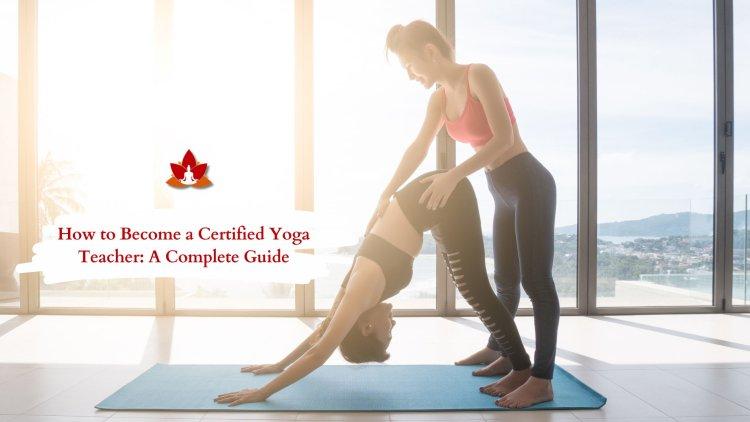Yoga is more than just a physical practice; it’s a way of life that nurtures the body, calms the mind, and awakens the soul. As the world continues to embrace the healing power of yoga, the demand for knowledgeable and certified yoga teachers is on the rise. If you’ve been practicing yoga and feel inspired to guide others on their journey, you may be wondering how to become a certified yoga teacher. This blog offers you a clear roadmap to turn your passion for yoga into a meaningful and rewarding profession.
Deepen Your Personal Practice
The first step in how to become a certified yoga teacher is committing to your personal practice. Before you can teach others, you need to cultivate a solid understanding of yoga yourself. This includes not only the physical postures (asanas) but also breath control (pranayama), meditation, and the underlying philosophy of yoga.
Try practicing different styles such as Hatha, Vinyasa, Ashtanga, or Yin yoga to find what resonates with you. A strong personal practice helps you connect deeply with yoga and provides a strong foundation for teaching in the future.
Enroll in a 200-Hour Yoga Teacher Training (YTT)
To officially begin your journey toward becoming a yoga teacher, you’ll need to enroll in a 200-hour yoga teacher training course. This is the industry standard for entry-level yoga teaching and is recognized by most yoga studios around the world.
A typical 200-hour YTT includes:
-
Asana practice and alignment
-
Yoga philosophy and ethics
-
Pranayama and meditation techniques
-
Anatomy and physiology
-
Teaching methodology and sequencing
-
Practicum and teaching experience
When searching for how to become a certified yoga teacher, make sure the program you choose is registered with Yoga Alliance, a globally recognized credentialing body. This ensures your certification meets international standards and opens doors for teaching opportunities worldwide.
Choose the Right Training Program
There are countless yoga schools and training centers across the globe, from India to the U.S. to Europe. Some offer intensive one-month residential programs, while others provide weekend or part-time options. Think about what fits best with your schedule, lifestyle, and learning style.
If you're looking for an immersive and traditional experience, India—particularly Rishikesh or Kerala—is a popular destination. On the other hand, if you prefer a flexible approach, online teacher training programs have become a valid and convenient option in recent years.
Complete the Course Requirements
During your training, you’ll dive deep into yoga philosophy, anatomy, class planning, and hands-on teaching. Many students find this process transformative, not just professionally but personally. To become certified, you’ll need to attend all sessions, complete assignments, pass assessments, and demonstrate your ability to teach a class effectively.
This experience is not just about memorizing poses—it’s about becoming a true practitioner and teacher of yoga, living its principles both on and off the mat.
Register with Yoga Alliance (Optional but Recommended)
After successfully completing your 200-hour training, you’ll receive a certificate from your school. If your school is Yoga Alliance-registered, you can take the additional step of registering yourself with Yoga Alliance as a Registered Yoga Teacher (RYT 200).
While this step is optional, it adds credibility to your resume and gives you access to teaching resources, continuing education, and networking opportunities. Many studios and retreat centers prefer or require Yoga Alliance registration when hiring.
Start Gaining Teaching Experience
Now that you know how to become a certified yoga teacher, the next phase is gaining real-world experience. Start by teaching friends, family, or small community classes. Volunteer at local studios, gyms, or wellness centers. These early experiences will help you develop confidence, learn to manage different group dynamics, and find your voice as a teacher.
Remember, every great yoga teacher was once a beginner. Don’t be afraid to start small—what matters is showing up with authenticity and a willingness to grow.
Continue Your Education and Specialize
The learning doesn't stop after your first certification. To deepen your skills and open up more opportunities, consider pursuing advanced training such as a 300-hour YTT, or specialize in areas like prenatal yoga, yoga for seniors, or yoga therapy.
Workshops, retreats, and mentorships also play a huge role in your ongoing development. Staying curious and committed to lifelong learning is key to becoming a respected and effective teacher.
Live the Yoga Lifestyle
Finally, remember that being a certified yoga teacher isn’t just about what you do in class—it’s about how you live your life. Embrace the values of yoga such as compassion, mindfulness, self-discipline, and gratitude. These qualities will naturally reflect in your teaching and attract students who resonate with your energy.
Conclusion
Learning how to become a certified yoga teacher is a beautiful and empowering journey. It involves dedication, practice, and a genuine desire to help others heal and grow through yoga. From deepening your personal practice to completing a Yoga Alliance-recognized training program and gaining hands-on experience, every step brings you closer to becoming the guide others are looking for.
Whether you dream of teaching in a local studio, leading global retreats, or offering online sessions, your journey starts now. With passion in your heart and purpose in your steps, you’re already on your way to becoming a certified yoga teacher.
